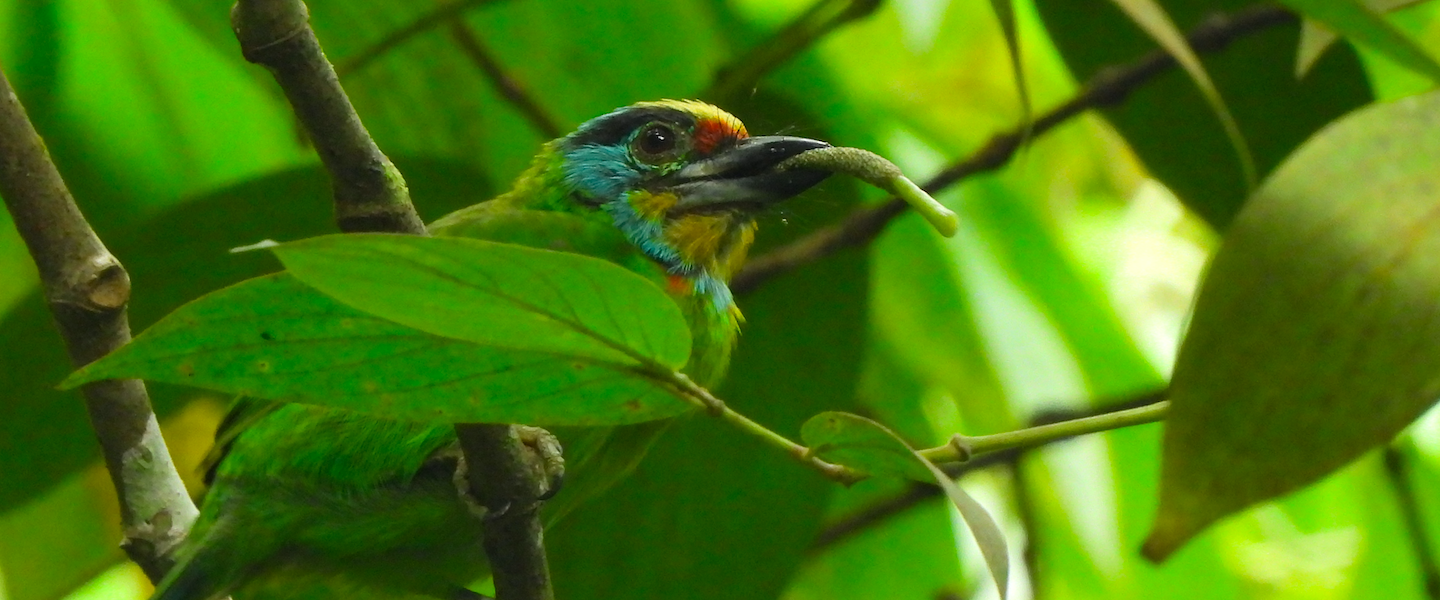This morning started well before 06.00, as I joined Pep Cantó, Miguel Sabio, and Jorge Verdú for a bird ringing session in the recreational area of Font Roja Natural Park. Half an hour before the sun rose, we installed the mist nets hearing the calls of a tawny owl (Strix aluco), and under the expert eyes and lenses of cameramen from a wildlife program of a local TV channel who shared the morning with us. Chill temperatures, very high humidity, and a thick fog were continuous during the whole session so only few birds were caught: common chaffinches (Fringilla coelebs), great tits (Parus major), a crested tit (Lophophanes cristatus), and a robin (Erithacus rubecula).
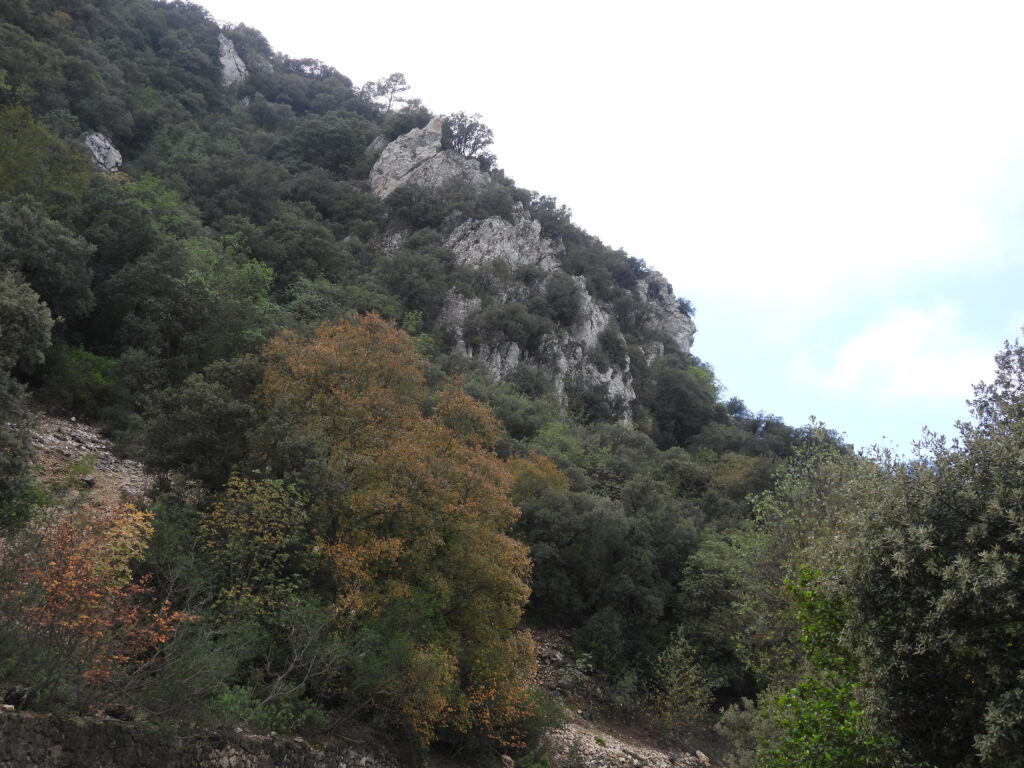
At 10.57, in the middle of the session and while the cameramen interviewed Pep about a bird caught and Sergio Gilabert joined us, a series of high-pitched two-syllable calls started coming from the trees on top of us. The calls were loud and clear, an unmistakable melody that had become familiar after learning it via Merlin and xeno-canto, trying to connect with the species these last weeks. Although the bird was out of sight, we did not hesitate to quickly stand up and follow the calls. I had just lifered the yellow-browed warbler (Phylloscopus inornatus).
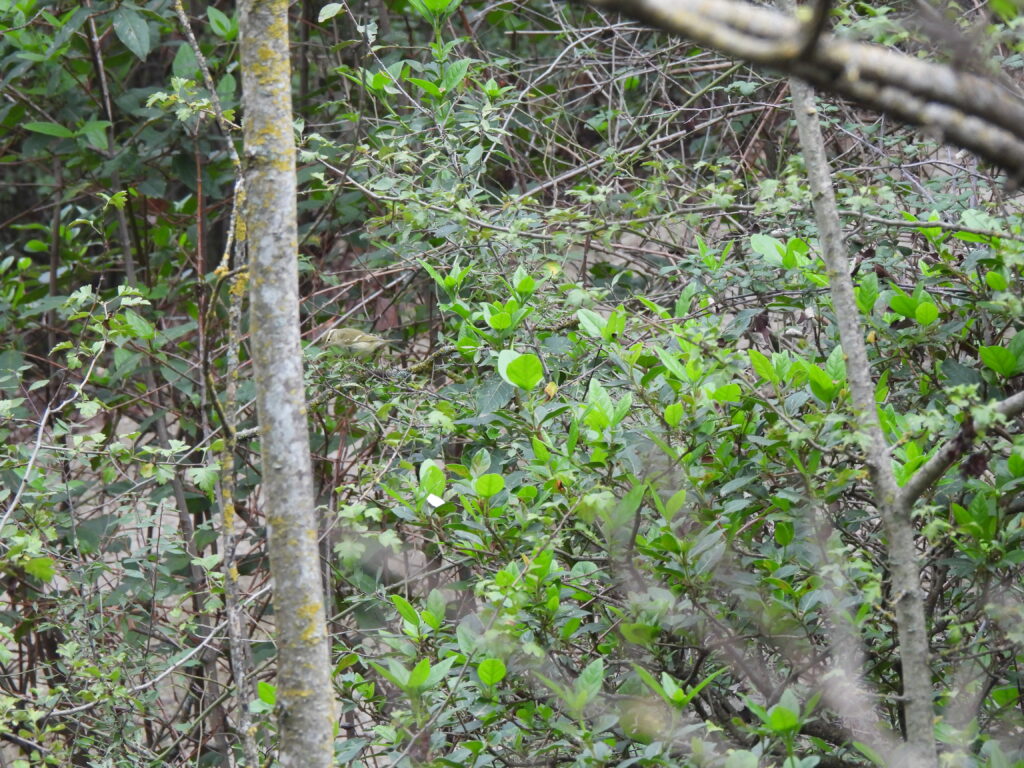
We all made sure to record its calls during the several minutes that the bird kept calling loudly. Coincidentally, I was the only one with a camera so I ran down the road as the warbler moved into the camping area, but I missed the relatively good views that the rest of the group had by staying at a higher point and looking at the tree tops. The TV camera crew must have recorded some funny action shots of the moment instead, and inquired us about the bird. At a certain point, the bird flew to a distant tree, got silent, and disappeared. We did not hear it again for the rest of the session.

We finished ringing about midday, and the fog finally dissipated. I decided to stay around for a while and try to get some views of the bird. A Peregrine falcon (Falco peregrinus) called from the distance while tens of tits and chaffinches came to feed and drink to the area where the mist nets are set once the sun shone. Common chiffchaffs (Phylloscopus collybita) were also present, heard throughout the morning. At 12:08, a tiny bird becomes evident for its restless behavior, with short flights from perch to perch and occasional hovers, reminding me of the behavior of other leaf warbler species. Indeed, the yellow-browed warbler showed up in a silver poplar (Populus alba) for merely some seconds. After getting lost in the denser holm oaks (Quercus rotundifolia), I manage to relocate it five minutes later and follow it for about three minutes more. I managed to get quick but good looks of the main features of the smart plumage of the species whenever its quick movements allowed, and saw the bird feeding on an opening of a holm oak twig for a moment. During the frenzy, I realize it is possible that there are not one but two yellow-browed warblers, but trying to follow both of them at once by myself proved to be more difficult than I imagined and I eventually could not confirm it. The bird(s) remained silent during this second encounter and eventually got lost in the holm oaks at the distance.

The encounter with this species is mostly remarkable because of the usual range of the yellow-browed warbler. A long-distance migrant, this species breeds throughout Siberia and migrates to wintering grounds in Southeast Asia. Despite this, an increasing number of individuals are seen every year in Western Europe, making it one of the most regular and abundant Siberian species in the region. So much so, that the Spanish National Committee of bird rarities does not consider the species a ‘rarity’ since 2016. The species has become a study model for the interesting process of establishing new migration routes through vagrants that survive in places distant from traditional wintering grounds, generating a new phenotypic behavior that is fixed in the population, which might explain the ever-increasing number of sights of the species in Western Europe (see Dufour et al. 2022). Some areas of the Iberian peninsula get regular records, especially urban parks of the main cities and capes of the Atlantic coast. Even in the Valencian Community, some places like l’Albufera de Valencia have gathered numerous records over the years. This is, however, not the case for Alicante.
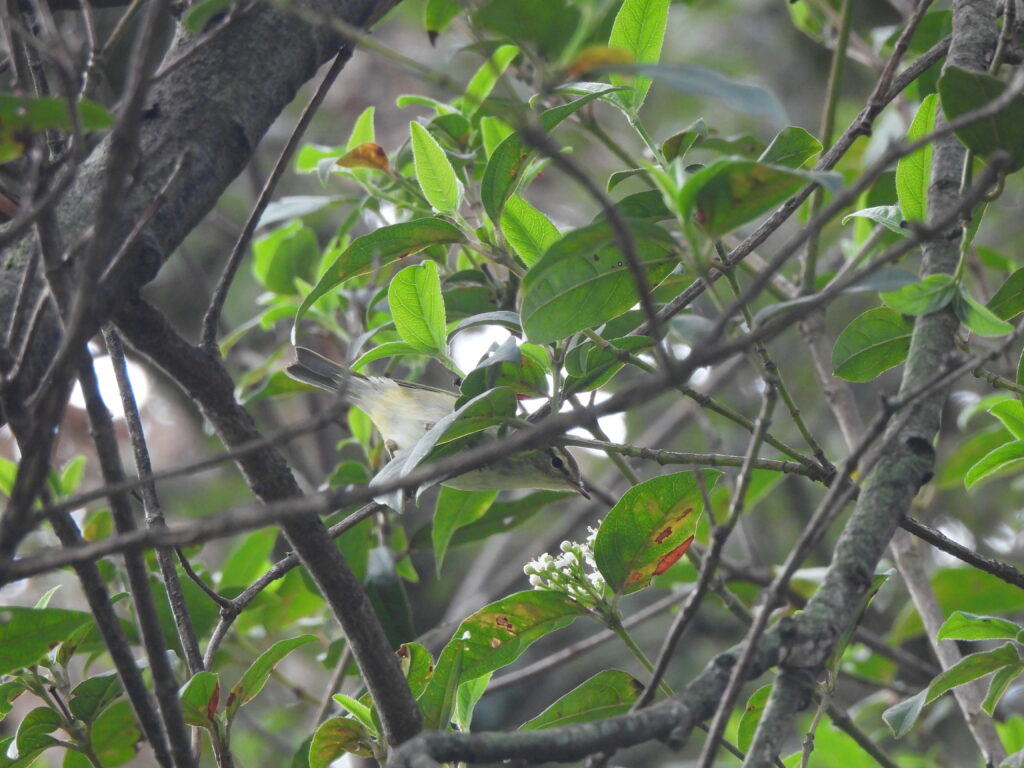
The first records of the species in Alicante region were two birds in Altea in 2015; by the time, tens were recorded every year in Valencia region. One of these birds was ringed in Riu Algar mouth, where several yellow-browed warblers have been seen and ringed since: at least in 2018, 2019, and 2020. Miguel recalls ringing a bird in La Vila Joiosa sewage plant in 2020, and later that year a bird was seen in another sewage plant in Lo Monte. Browsing through eBird, a bird was seen several days in 2022 in an urban area at Cabo de las Huertas, and a bird was seen some days ago in 2024 in Tabarca. All these records have taken place in Autumn between 15th October and 2nd November, with the exception of a bird recorded in Parque La Marjal in San Juan on late February 2018. In any case, all of these birds were found less than 10 km away from the shore, a land strip favored by many migrant birds.
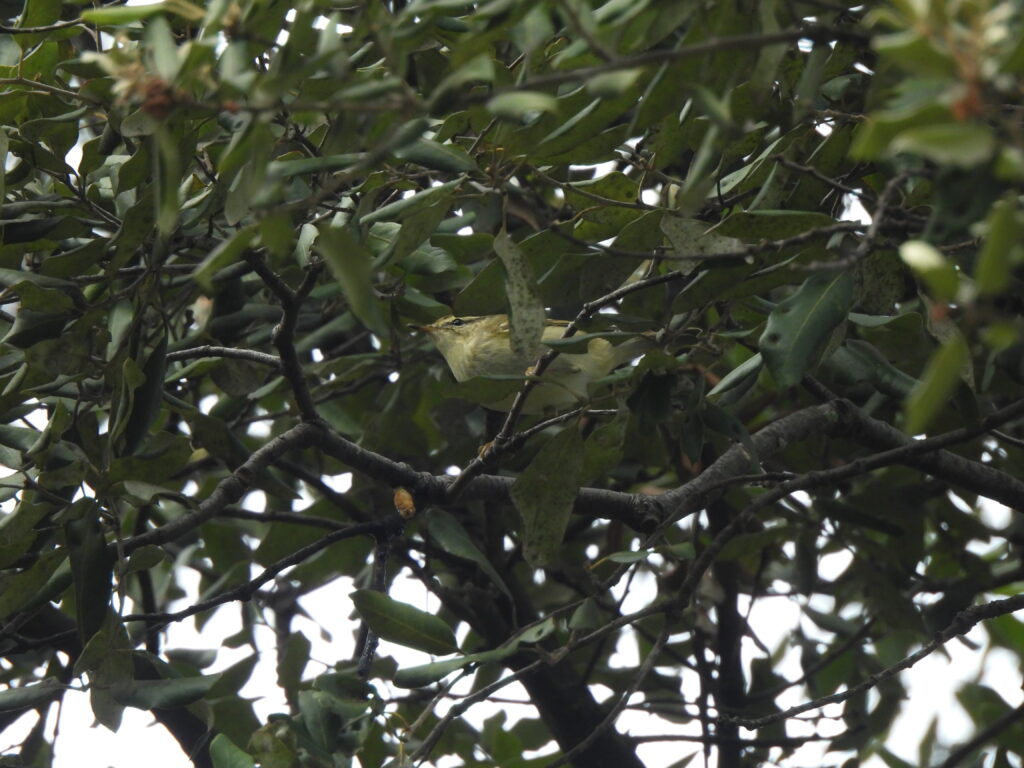
The rarity of the species in Alicante and the concentration of the sights in the coastal area makes the case of Font Roja even more remarkable. Font Roja is the only inland location where the species has been recorded thus far in Alicante. The first bird ever spotted in the Natural Park was a bird ringed by Pep higher up the mountain in Font de Tetuán on 29th October 2022. After that, Luis Albero heard and glimpsed a bird in the recreational area some days ago on 21st October 2024. Pep recorded the species in the park for the third time only three days later, on 24th October, around the area where we sighted it today (6th November, the latest date I found among the records). None of these records managed to determine whether the bird of 2022 has come back or not until today, when the shots I snapped show a non-ringed bird. This confirms that at least two birds (and perhaps at least two this year) have visited the area recently, and raises the possibility of long-staying birds in the area after repeated records over the course of two weeks this Autumn. These facts make Font Roja a particularly interesting spot to look for the yellow-browed warbler despite its oddity in the context of the rest of regional records. Moreover, spotting this beautiful lifer so close to home has been a great treat.

